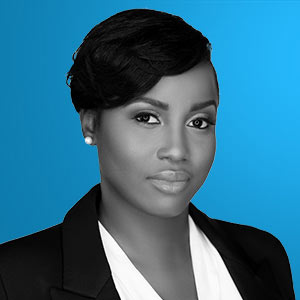|
A panel of experts shares how to make your workplace better for women and non-binary people — right now
Text originally published at: Smith Business Insight Queen's
To mark International Women’s Day on March 8, we asked five leading experts on diversity, equity and inclusion to share ideas, decisions and changes you can apply now — as in, today — to put your organization on a more equitable path forward.
Start tackling systemic barriers

Kate Rowbotham - Distinguished Teaching Fellow of Organizational Behaviour, Smith School of Business
“Many organizations have initiated and implemented incredible individual efforts to benefit women, and a lot of managers and leaders are working very hard to create more equitable workplaces. And these individual responses are important. But they cannot, in isolation, overcome the systemic forces — including the patriarchy and white supremacy — that often underpin how organizations have traditionally been structured. They tend to occur in a framework that, for instance, doesn’t support caregivers, or upholds very specific norms of professionalism as it relates to appearance, or doesn’t accommodate people with different experiences related to generational wealth. There are many systemic elements that get in the way of progress.
“I think of a saying that is often cited in disability work: ‘Nothing about us without us.’ If decision-makers want to create more equitable places to work, they should commit to bringing in women who have different experiences — including Black women, Indigenous women, trans women, and women with disabilities — to help shape and support the initiatives that make that goal happen. And not in a token way. That’s how we can start to effect systemic change.”
Understand that no two women are the same

Camille Dundas - Principal educator at The Idea Practice, co-founder and editor-in-chief at ByBlacks.com and racial equity consultant
“I think when we hear this question, we naturally think about changes to policies or training. And these are of course important, but before we get there, organizations need to listen to women and stop assuming that all women need the same things.
“It may seem obvious, but you’d be surprised how many organizations fail at gender equity simply because they have not taken an intersectional approach, at the core of which is understanding that while all women do share some common concerns, there are so many different variations of our needs. The danger in not taking an intersectional approach is that you can end up perpetuating systemic inequalities, leading to the exclusion of certain groups within one community.
“Workplace leaders must actively consider how various forms of discrimination and privilege intersect to shape women’s lived experiences and tailor workplace initiatives and policies to be inclusive of all women and gender-diverse people, regardless of their intersecting identities.”
Consider potential — not just proof points

Candice Maxis - Chief people and culture officer, Canadian Olympic Committee
“I think it would be great to see organizations start to look more at the potential of women—and women of colour—when opportunities emerge.
“Often, if there is going to be a promotion or a new role, leaders will look at men and say ‘I think he can do the job. I think he has the potential to do it,’ even if the candidate might not have all the experience. For women, it’s very different. The evaluation tends to centre on proof points or past track records. It’s more about ‘Show me that you’ve already done a job like this well,’ instead of ‘Show me what you can do.’
“People need to realize that this is a real barrier for the advancement of women. Until there is a mindset shift, it is going to be very difficult to get to a place where we have equity.
“It would really help if, whenever leaders talk about their talent strategy, or hiring managers review a candidate for a role, they would pause for a moment to reflect and say, ‘Hey, are we having the same conversation about a woman we’re considering for a role as we would for a man?’ Even just stopping to ask that question would be a game changer, in my view.”
Commit to a menopause action plan

Janet Ko - President and co-founder, Menopause Foundation of Canada
“I think organizations can immediately take action to create menopause-inclusive workplaces for women. In 2023, we released a report called Menopause and Work in Canada, which, for the first time, quantified the staggering economic impact of the unmanaged symptoms of menopause to the Canadian economy at $3.5 billion annually — that includes 540,000 lost days of work per year and $237 million annually in lost productivity.
“A surprising reality is that women themselves are bearing the brunt of this impact with $3.3 billion in lost income annually. There are five million working women in the country over the age of 40; we represent one quarter of the workforce. Menopause intersects with a critical career stage where women are taking on more leadership roles, and assuming greater responsibility. So, in their peak earning years — when women should be earning the most — some women are stepping away from their roles altogether, or taking a lesser job, or going part time, because they’re having to manage menopause symptoms.
“We think menopause is the missing link to explain why more women aren’t breaking through the glass ceiling. In fact, Harvard Business Review has done a number of pieces on the reality that if organizations want to get serious about retaining and promoting talent, they need to recognize that menopause is a legitimate workplace issue worthy of conversation and action. We cannot afford to lose the competence, skills and capabilities of women in the prime of their working lives.
“I see this as a significant opportunity for organizations to demonstrate their support for women in their prime and to change the conversation on the ageist narratives that have helped to drive the silence around menopause. We offer a free Menopause Inclusive Workplace Playbook to help organizations make meaningful change. We don’t think it’s a heavy lift.”
Embrace flexibility — permanently

Tanya van Biesen - President and CEO, WCM
“We need to keep talking about flexibility. In our society, the burden of care — family care, home care, elder care and child care — still tends to fall disproportionately on women. Flexibility of where, when and how they work enables women to do the many things that often fall to them, while also remaining in the workplace.
“Flexibility involves orienting workplaces more around performance than presenteeism; it involves focusing on outcomes, not face time. This naturally has implications for return-to-workplace efforts, which are important to a lot of employers. In some roles you simply need to be on site at certain times, but the pandemic has presented us with an opportunity to be more creative and more thoughtful around flexibility at work and to think about how we assess and measure performance on a lasting basis. Are we leveraging everything we learned during that two- to three-year period where many of us worked from our kitchen tables? How much of that can we take into the future?
“In financial services in Canada, we are seeing a number of organizations that are being more creative in their approach to flexible work. And I think there’s a real opportunity for more businesses to do more of that as we move forward.”

